In early 2015, I felt like the walls were closing in.
We had just (very unexpectedly) packed up our entire lives and moved into my childhood home.
At first, I told myself I could make it work.
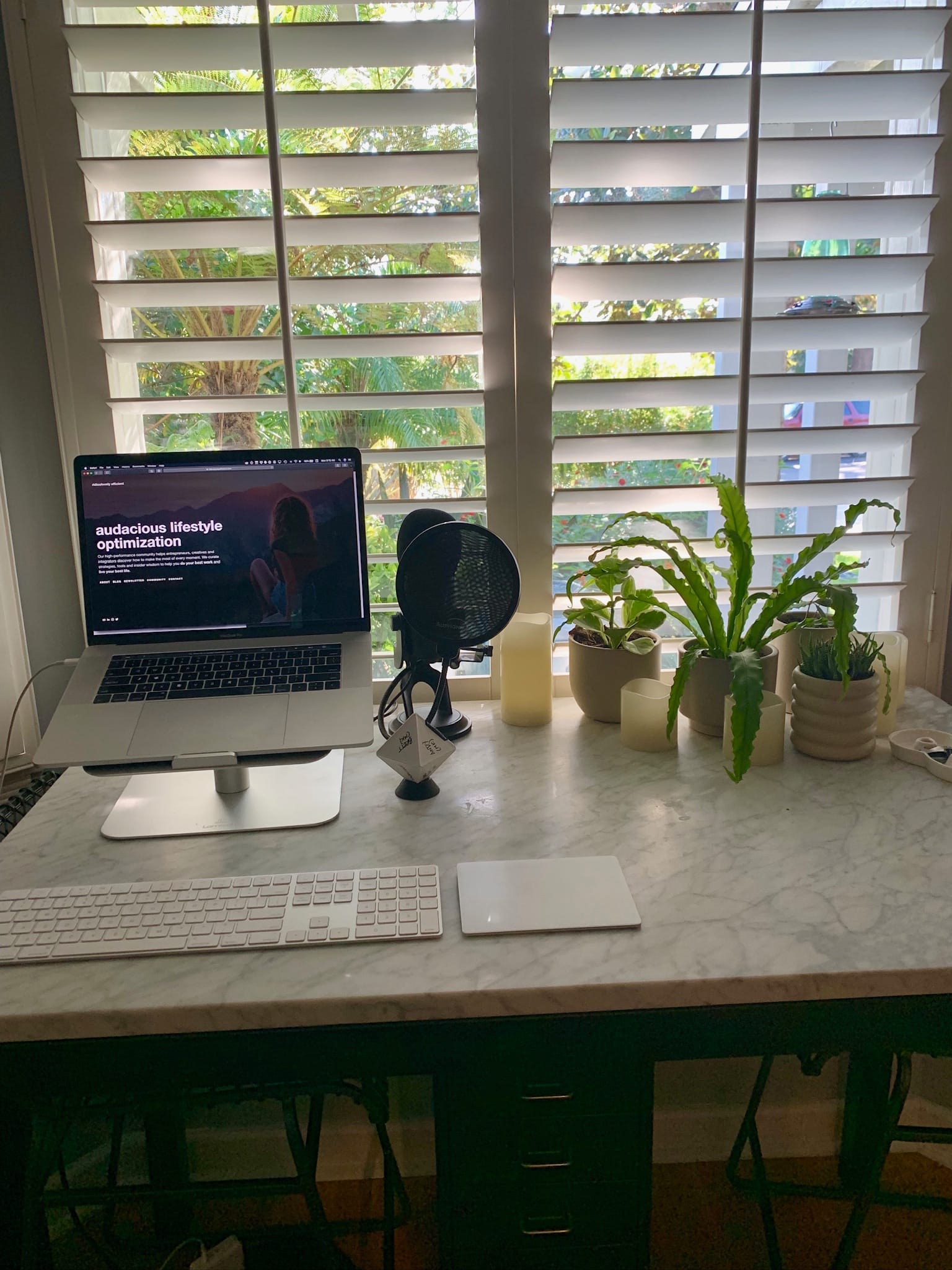
I carved out a tiny corner, tried to find a rhythm, and pushed forward. But one day, as I perched on my dad’s oversized leather couch, laptop balanced on a stack of moving boxes, I hit my breaking point.
Normally, when preparing for an event, I'd be deep in flow—crafting content, refining strategy, making things happen. Instead, I was suffocating under the weight of forty years of my parents’ memories, our boxed-up future, and a space that never felt like my own.
I needed more than just a desk. I needed room to breathe.
The solution? A 10 x 7 foot Costco shed: Shedquarters.
It arrived on a pallet, along with an instruction manual thick enough to be a novel.
My husband Mike and his friend Brian spent a month transforming it into something magical: an office by day, a bar by night.
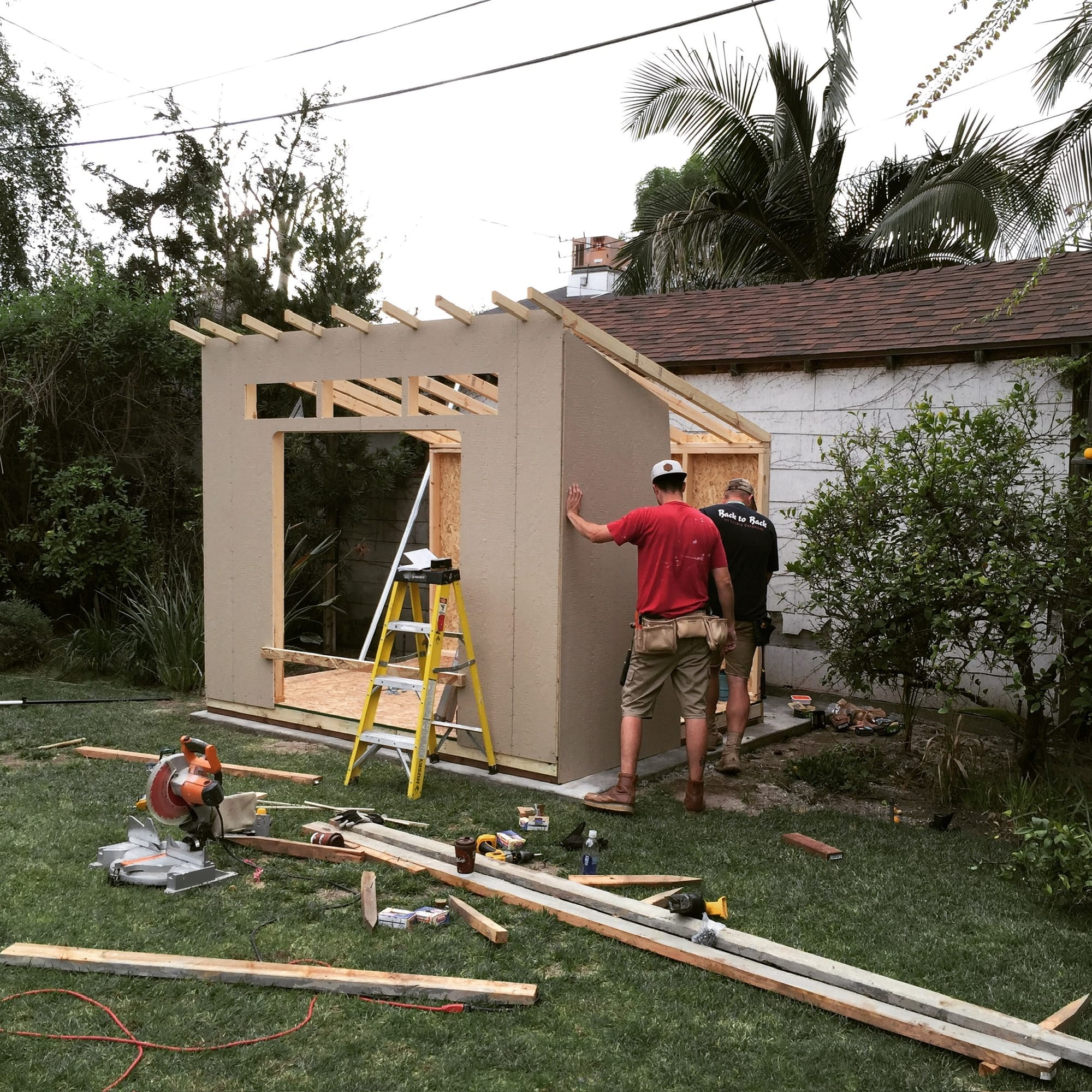
They insulated the walls, covered them in whiteboard material, ran electricity, and even added a mini-fridge. On weekends, we’d turn the monitor outward to watch sports games in the backyard, laying on blankets under the LA sky.
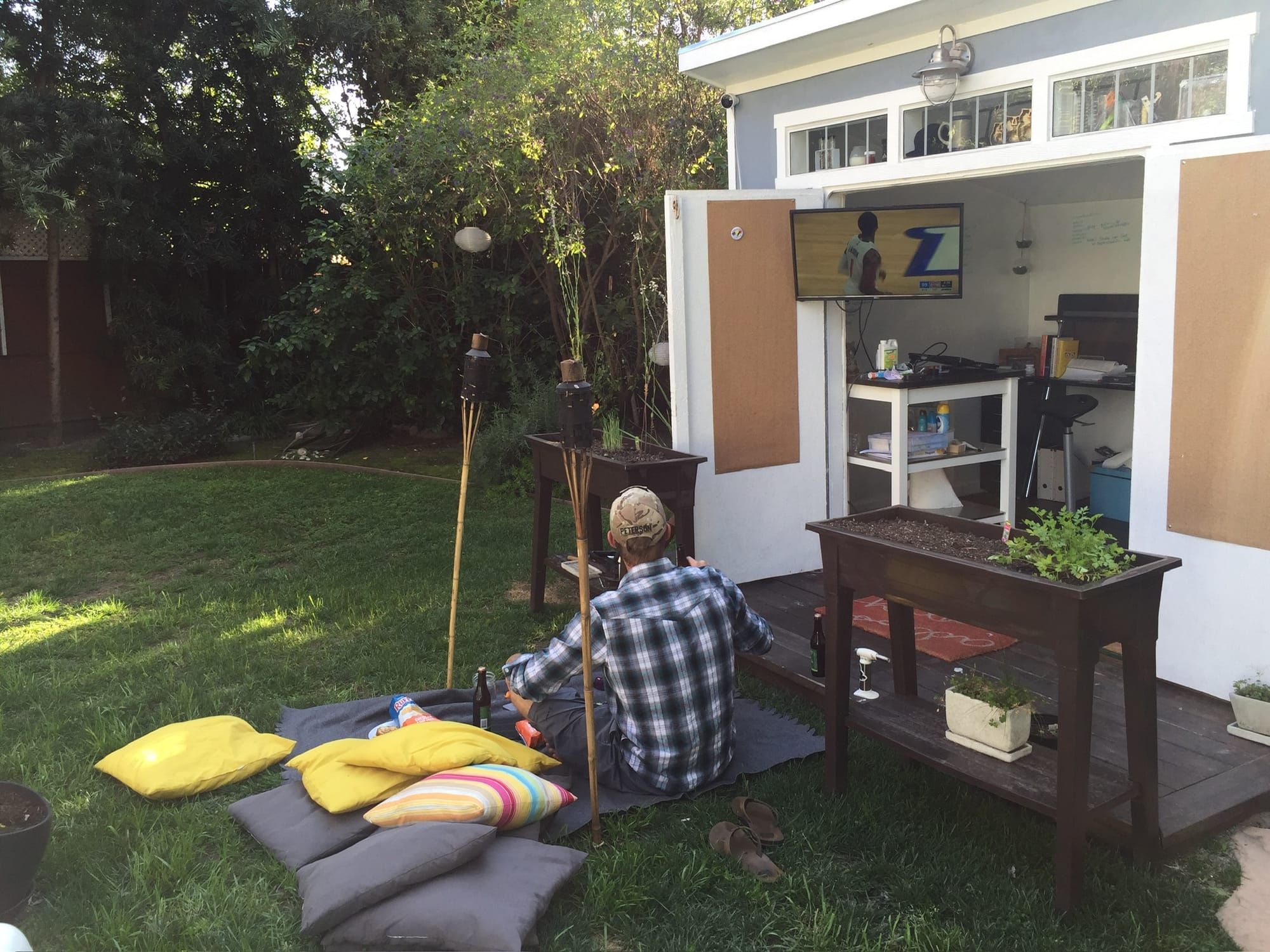
It wasn’t perfect—far from it. It leaked when it rained. Eventually, mold forced us to abandon it entirely.
But here’s what that humble shed taught me about building anything worthwhile:
- Start where you are. We didn’t have the resources for a proper office addition. But we had enough for a shed and some creative problem-solving.
- Embrace dual purposes. That shed wasn’t just an office—it became the headquarters for countless backyard gatherings, the catalyst for community in our outdoor space.
- Let go of permanence. Sometimes, the temporary solution teaches you exactly what you need in the permanent one.
- Think beyond the obvious. Our backyard went from unused space to an extension of our living area, all because we dared to imagine it differently.
The Shedquarters is no longer a workspace, replaced by something more permanent. (Something I’ll be sharing more about soon!) But its legacy lives on in how I approach business challenges.
When you can’t do what you want, do what you can with what you have.
That Shedquarters wasn’t just an office—it was proof that creativity thrives within constraints. That sometimes the “make-do” solution opens doors you never expected. It taught me that innovation often comes from necessity, and that there’s profound power in starting before you feel ready.
Most importantly, the path forward rarely looks like what you initially imagined.
Sometimes, it looks like a Costco shed with whiteboard walls and weekend barbecues.
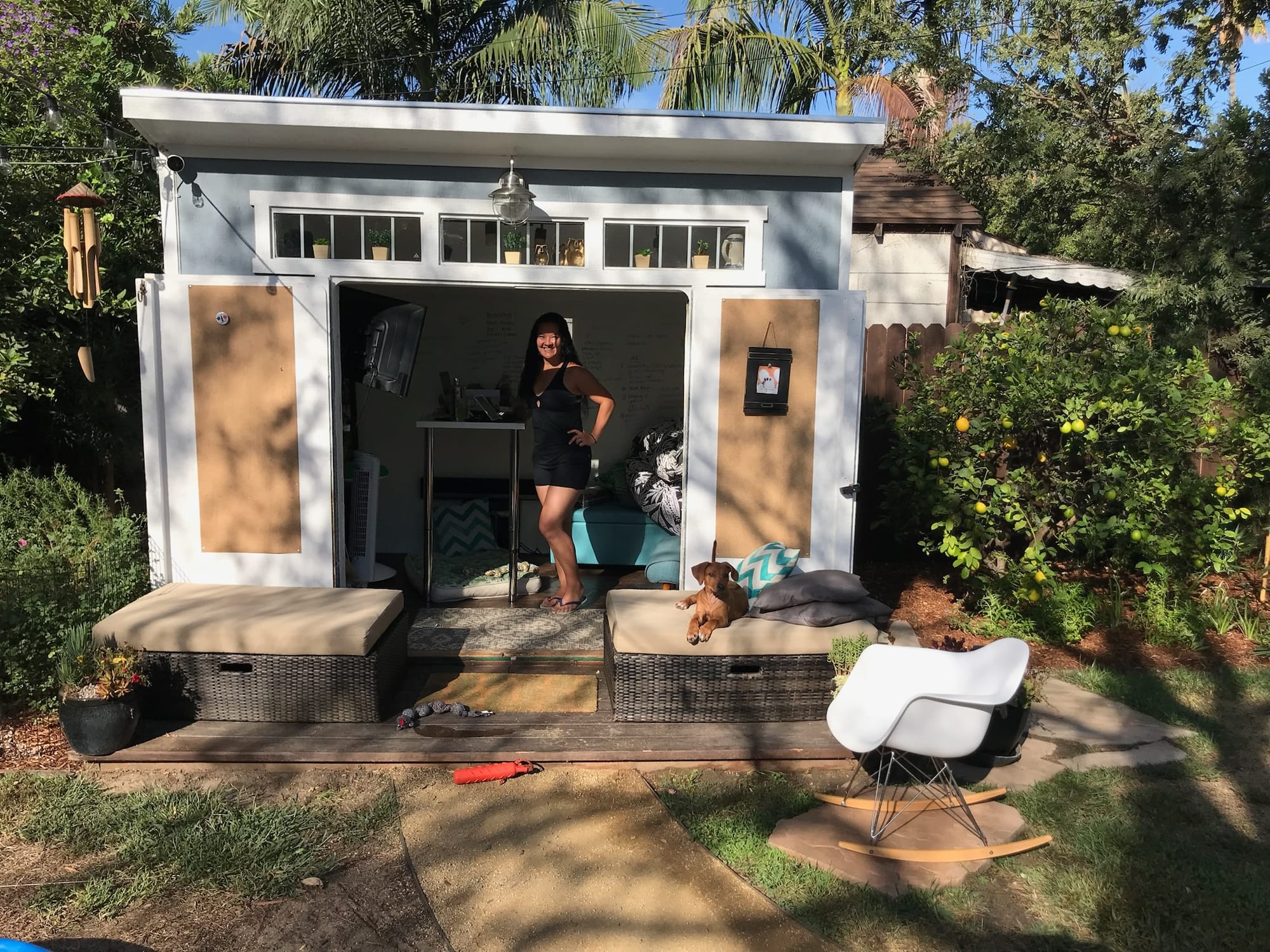
So, what temporary solution might you need to embrace today? What “good enough for now” could lead to your next breakthrough?
Remember: The perfect solution often emerges through imperfect action.
How This Applies to You: Embracing Imperfect Action in Your Life and Business
For high-achievers, entrepreneurs, and leaders, the struggle isn’t just about finding space—it’s about navigating uncertainty, making decisions without all the answers, and overcoming the fear of imperfection.
If you’re feeling stuck, here’s how you can apply the lessons of the Shedquarters to your own challenges:
- Stop waiting for the “perfect” conditions.
- Whether it’s launching a business, pivoting in your career, or starting a creative project, you don’t need the perfect setup to begin. What’s your version of a Shedquarters—a small, scrappy step you can take right now?
- Find your version of dual-purpose solutions.
- How can you make your current resources stretch further? Maybe your side hustle can be tested within your existing job, or a simple reorganization of your space can improve both productivity and well-being.
- Embrace temporary solutions as stepping stones.
- Every “for now” choice teaches you something critical about what you really need long-term. If you’re paralyzed by decision-making, focus on what’s “good enough” to move forward today.
- Reframe constraints as creative fuel.
- What limitations are you currently fighting? Instead of seeing them as roadblocks, ask: How could these actually push me toward a more innovative or unexpected approach?
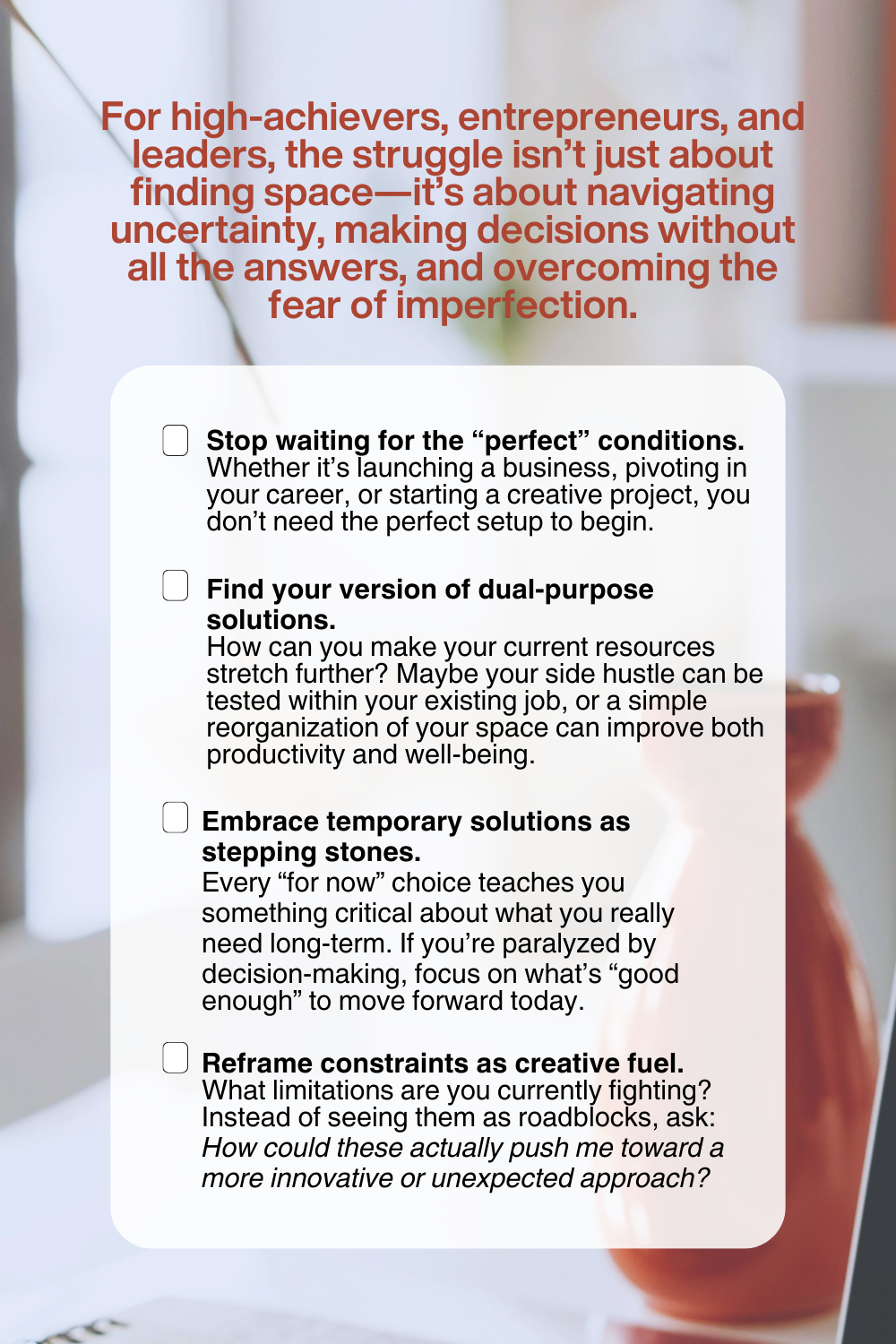
The perfect solution often emerges through imperfect action.
So… What’s the small, imperfect, but powerful step you can take today to move toward your vision?
Start there. You might be surprised where it leads.P.S. Be sure to follow me on social for more content like this!


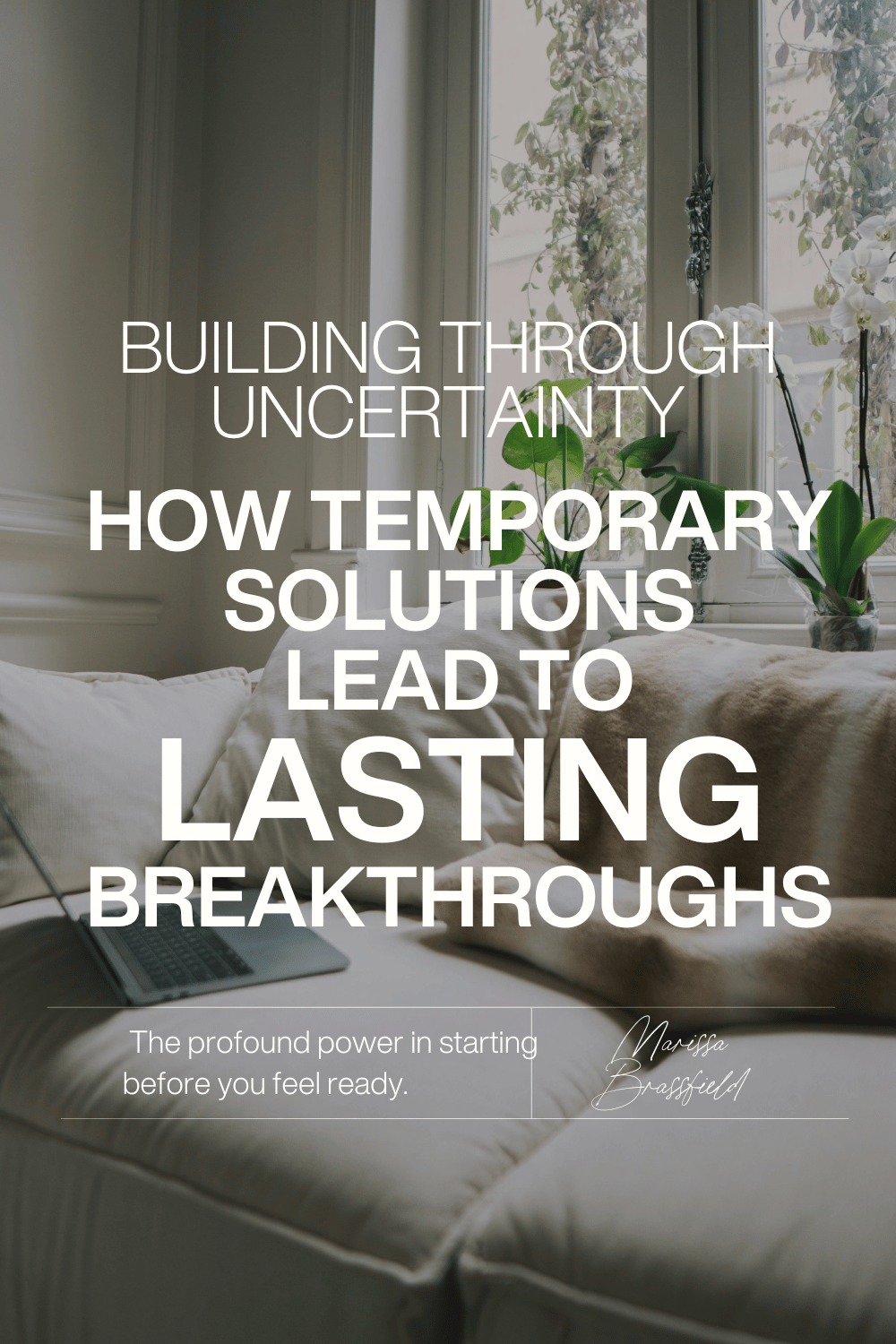
Member discussion